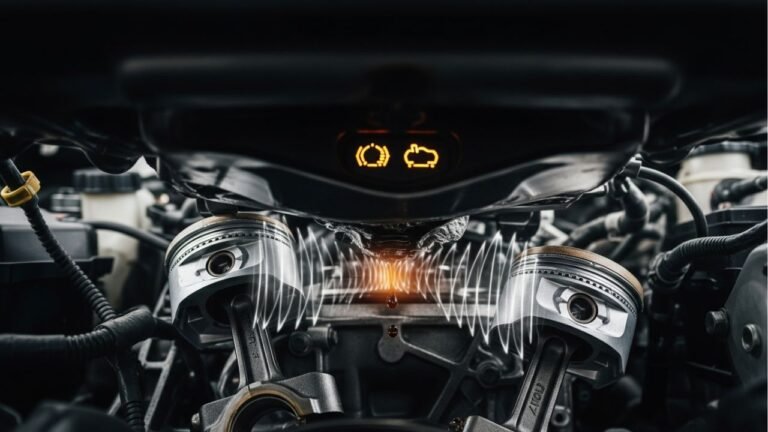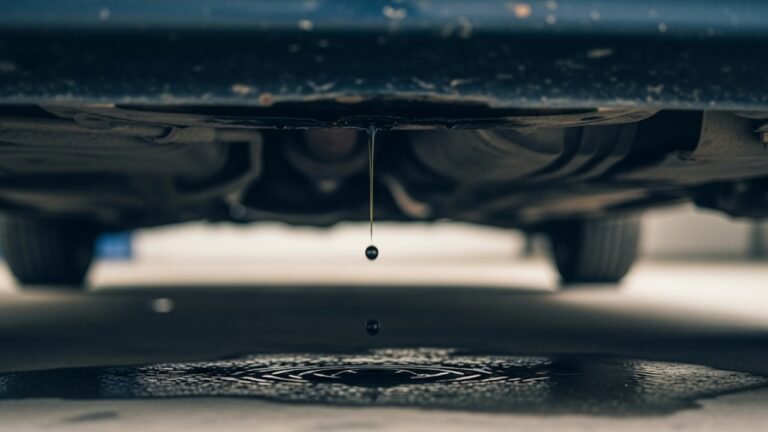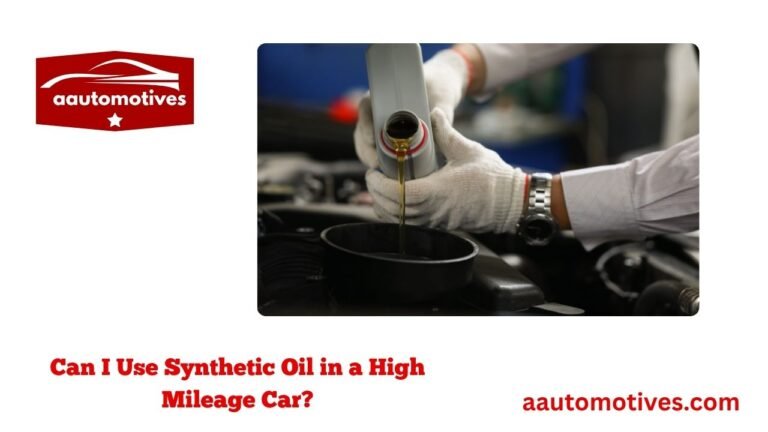Can You Use Murphy’s Oil Soap on Car Interior?
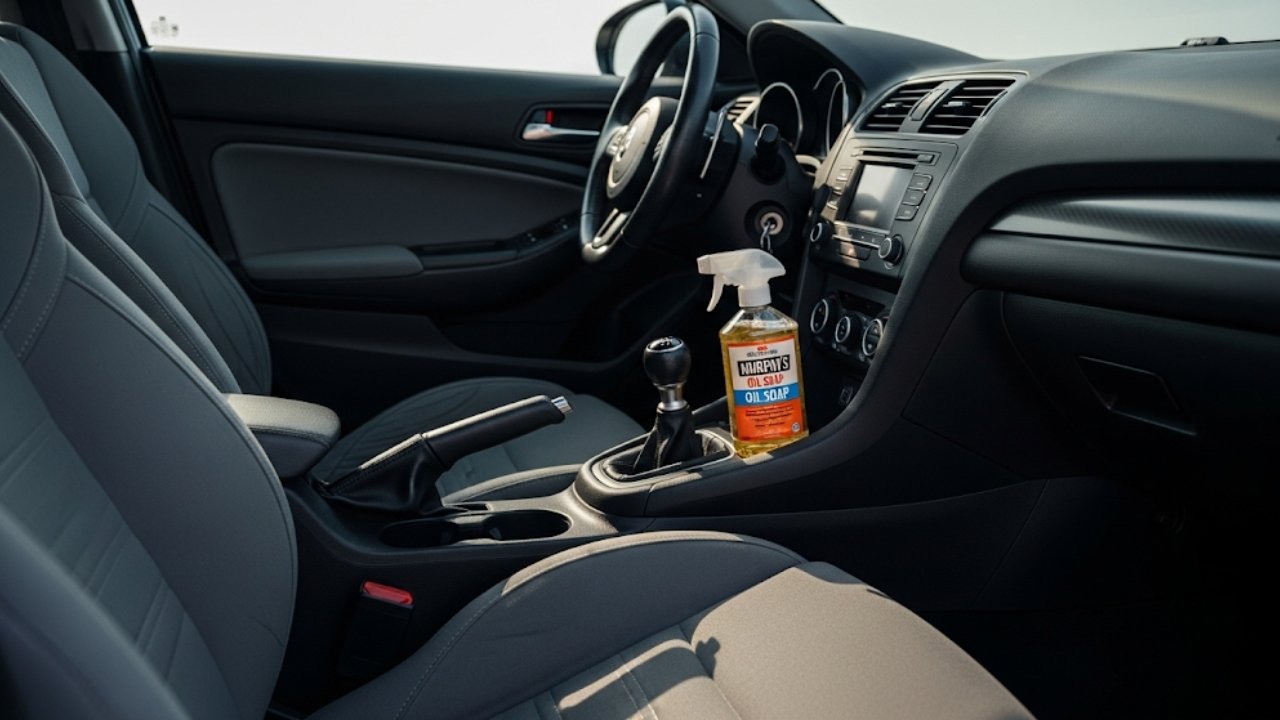
We often obsess over waxing the car’s paint or keeping the wheels spotless. But what about the car interior? It’s where we spend most of our time—stuck in traffic, on road trips, or sipping a coffee during a peaceful morning commute. And if you’re like me, you’ve probably looked at that dusty dash or those dull door panels and thought, “There must be something better.”
That’s where Murphy’s Oil Soap comes into play.
You might know it as the go-to product for cleaning wood floors. It smells clean, feels safe, and brings back that cozy, natural shine. But here’s the twist—I started using Murphy’s Oil Soap on my car interior, and it changed everything.
Let’s dig in deep and see if this household favorite is the secret car cleaning weapon we’ve been ignoring.
Why Even Consider Murphy’s Oil Soap for Car Interiors?
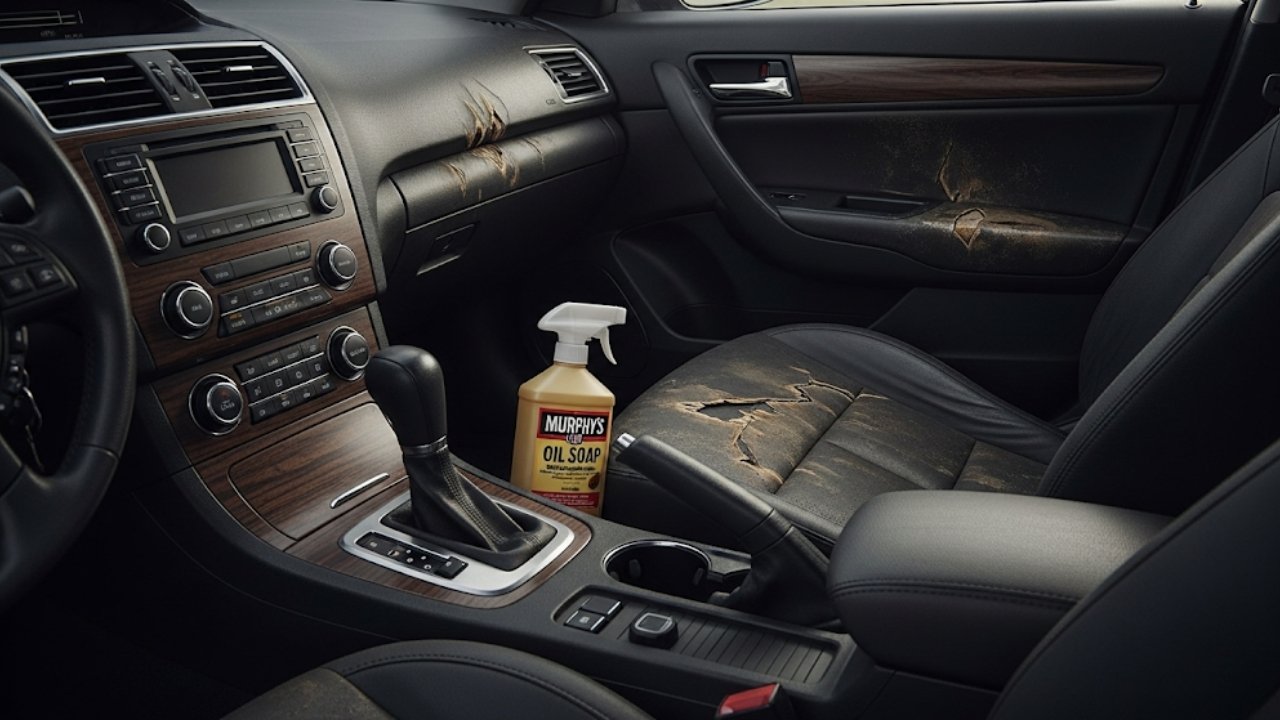
Many of us turn to specialized, expensive car cleaners. But those products can be full of harsh chemicals or leave a greasy residue. I used to juggle four different bottles: one for leather, one for vinyl, one for plastic, and one for fabric. Exhausting, right?
Then, one day, after cleaning my living room floor with Murphy’s Oil Soap, I paused. The wooden baseboards looked soft, clean, and glowing—not oily or sticky. I looked at my car’s steering wheel and had a “what if” moment.
Turns out, using Murphy’s Oil Soap on car interior makes a lot of sense:
It’s biodegradable and gentle.
No ammonia or bleach, which can ruin car materials.
Smells refreshing, not chemical-heavy.
Versatile across many interior surfaces.
It’s like bringing grandma’s favorite cleaner into the modern garage.
What Is Murphy’s Oil Soap Made Of?
Let’s Break Down the Ingredients
Before we go further, let’s understand what’s inside the bottle. You should always know what you’re using on your precious ride.
Here’s a simple table showing the core ingredients and what they do:
| Ingredient | Purpose | Car Interior Friendly? |
|---|---|---|
| Vegetable Oil Soap | Cleans and conditions | ✔️ Yes – gentle on plastics |
| Water | Dilution base | ✔️ Yes – non-abrasive |
| Sodium EDTA | Water softener | ✔️ Safe in small amounts |
| Fragrance | Fresh scent | ✔️ Pleasant and subtle |
| Preservatives | Keeps formula shelf-stable | ✔️ Safe for general use |
There are no strong solvents, no alcohol, and no waxy build-up agents. That’s great news for dashboards, door panels, steering wheels, and even leather (more on that soon).
Where Can You Use Murphy’s Oil Soap in the Car?
Here’s where things get interesting. I’ve personally used Murphy’s Oil Soap on my car interior for over a year now—across three different cars (two with fabric seats, one with leather). And here’s what I learned through trial and error.
Great for:
Dashboard
Steering wheel (vinyl or plastic)
Door panels
Center console
Rubber or vinyl floor mats
Plastic trims
Leather seats (if diluted properly)
Not Ideal For:
Touchscreens or digital clusters
(too much moisture risk)Fabric seats or carpet
(can leave residue if not rinsed)Headliners
(fabric could sag if wet)
Pro Tip: Always do a spot test. A little wipe on a hidden corner can tell you everything.
How to Use Murphy’s Oil Soap on Car Interior Safely
This part is crucial. You don’t want to dump a bottle on your dashboard and hope for the best. Here’s my go-to routine after many weekend cleaning experiments.
What You’ll Need:
A spray bottle
Murphy’s Oil Soap
Warm water
Microfiber cloths (2-3)
Soft brush (for crevices)
Steps to Follow:
Mix the solution:
Use a ratio of 1/4 cup Murphy’s Oil Soap to 1 gallon of warm water. You can adjust this to 1 tablespoon per 16 oz if using a smaller spray bottle.Spray onto the cloth, not directly on surfaces.
This keeps excess moisture out of vents or electronics.Wipe gently over plastic, vinyl, and leather.
Watch the surface go from dull to glowing in seconds.Use a dry cloth to buff.
This removes any leftover product and enhances the finish.Repeat monthly for best results.
Weekly might be overkill, especially if the car stays clean.
I’ve used this on an old Corolla, a mid-range Honda CR-V, and my cousin’s luxurious Lexus—and every time, it brought the interior back to life.
Benefits of Using Murphy’s Oil Soap on Car Interior
Let’s be real. We clean to protect, maintain, and enjoy.
So, what does Murphy’s Oil Soap actually give you that other products don’t?
Eco-Friendly Cleaning
It’s biodegradable and non-toxic. I don’t wear gloves when I use it, and I don’t feel dizzy afterward (unlike when I used ammonia-based sprays).
No Greasy Finish
Some interior wipes leave a shiny mess. This one gives a natural, satin finish—no fingerprints or smudges.
️ Light, Pleasant Scent
It smells like “clean” without being overpowering. People often ask me what air freshener I use—it’s just the soap!
Budget-Friendly
A single $4 bottle lasts me over a year. Compare that to a $12 plastic cleaner, $10 vinyl protectant, and $15 leather conditioner. You’re saving real money.
Can You Use It on Leather Seats?
This is the most asked question. And I get it—leather is tricky.
I tested Murphy’s Oil Soap on car interior leather by diluting it even more than normal (1 tablespoon per quart of water). Then I gently wiped and dried quickly.
Result? Soft, clean leather with no cracking or fading.
But here’s the catch:
Don’t let it soak. Just wipe and dry.
Always follow with a leather conditioner to restore oils.
Avoid suede or untreated leather.
So yes, you can use Murphy’s Oil Soap on leather, but be extra cautious. Treat it like a delicate fabric, not a rugged surface.
Real-World Test: My Personal Story
A few months ago, I picked up an old 2010 Toyota Camry from a friend. The inside looked… rough. Dust caked the air vents, the leather steering wheel felt sticky, and the dash had water stains.
I didn’t want to buy $50 worth of detailing products.
Instead, I filled a spray bottle with my trusty mix of Murphy’s Oil Soap, took a microfiber cloth, and started wiping.
Within 20 minutes:
The wheel felt smooth and clean.
The dash had a soft glow, like polished wood.
The door panels looked almost new.
It smelled like fresh citrus—not old gym socks.
It was one of those moments where you stand back and smile. You know that proud feeling when a $5 fix beats a $100 solution? That’s what this felt like.
Are There Any Risks of Using Murphy’s Oil Soap on Car Interior?
As much as I love this stuff, it’s only fair to talk about the potential downsides. Like any product, Murphy’s Oil Soap isn’t perfect for every situation.
Let’s be honest—it’s not a miracle cleaner. It’s gentle, yes, but that also means it may not remove extreme stains or tough grime in one go.
Possible Concerns:
Over-saturation: If you use too much water or soap mix, you can leave behind a hazy film or risk moisture getting into sensitive areas like vents or seams.
Streaking on glossy plastics: Some shiny surfaces can develop streaks if you don’t wipe them dry right away.
Compatibility with delicate materials: Some modern interiors have faux leather or coated finishes that may react differently—especially on luxury vehicles.
Solution? Use sparingly. Always test. And never soak surfaces.
How to Maintain a Clean Car Interior with Murphy’s Oil Soap
Once your car looks fresh, it’s all about keeping it that way. Regular upkeep makes a big difference—not just in looks, but also in resale value and driving comfort.
Here’s a quick maintenance guide using Murphy’s Oil Soap:
Weekly:
Wipe steering wheel and gear knob.
Light dusting on dashboard.
Monthly:
Deep clean door panels, center console, and glove box.
Treat leather (if any) with conditioner after wiping.
Seasonally:
Detail the entire interior.
Use brush to reach small crevices.
Freshen air vents with light fragrance.
You’ll find that your car always has that soft, clean scent and smooth feel. People will step in and ask, “Did you just get this detailed?”
Murphy’s Oil Soap vs. Other Interior Cleaners
Let’s compare this classic cleaner with some of the more common car interior products. I’ve used all of these at some point, and here’s how they stack up:
| Cleaner Type | Pros | Cons | Verdict |
|---|---|---|---|
| Murphy’s Oil Soap | Natural, cheap, gentle, fresh smell | Needs dilution, may streak if overused | ⭐ Best for everyday interior care |
| Armor All | Shiny finish, quick use | Greasy feel, artificial scent | Use for shine, not cleaning |
| Meguiar’s Interior Detailer | UV protection, strong clean | More expensive, contains solvents | Great for deep detailing |
| Homemade vinegar mix | Cheap, disinfects | Strong smell, can damage leather/plastics | Not recommended for interiors |
Murphy’s Oil Soap sits at that sweet spot: affordable, safe, and effective—especially if you want a natural-looking finish without residue.
Tips for Getting the Best Results
I’ve made my fair share of mistakes while cleaning interiors. So here are some tips that can save you time, effort, and frustration.
Pro Tips:
Less is more: Start with a light application. You can always go over again.
Wipe in circles: This prevents streaks and helps lift dirt.
Keep it dry: Don’t oversaturate microfiber cloths.
Don’t use on electronics: Use dry methods for infotainment screens.
Condition after cleaning: Especially important for leather or vinyl.
And most importantly—clean when it’s cool, not under direct sunlight. Heat can cause cleaning agents to evaporate too fast, leaving streaks behind.
Quick Summary: Murphy’s Oil Soap Car Interior Cleaning Benefits
Here’s a bullet point recap to help you decide if this is right for your car:
✅ Safe for dashboards, vinyl, plastic, and leather
✅ Biodegradable and eco-friendly
✅ Smells pleasant without harsh chemicals
✅ Leaves no greasy residue
✅ Extremely cost-effective
✅ Easy to dilute and use
❌ Avoid using on screens or fabric upholstery
❌ Test on luxury trims or sensitive surfaces
Frequently Asked Questions (FAQs)
1. Can I use Murphy’s Oil Soap on leather seats in my car?
Yes, but dilute it more than usual and wipe gently. Follow with a leather conditioner to keep the leather soft and nourished.
2. Will Murphy’s Oil Soap damage my car’s plastic trims?
No, it’s safe for most plastics. Just don’t oversaturate, and wipe dry afterward to avoid streaks.
3. Can I use it on my touchscreen or infotainment system?
Avoid it. Use a dry microfiber cloth or specialized electronic screen cleaner for those areas.
4. Is it okay to use Murphy’s Oil Soap inside newer vehicles?
Yes, but always test on a small, hidden area. Some newer materials may have coatings that react differently.
5. Does it leave a shiny or matte finish?
It leaves a soft, natural finish—not shiny or greasy.
6. Can I mix it with other car cleaning products?
Avoid mixing. It works best on its own with just water.
7. How often should I clean my car interior with Murphy’s Oil Soap?
Once a month is enough for a deep clean. For light maintenance, once every 2 weeks is safe.
8. Where can I buy Murphy’s Oil Soap?
It’s widely available at grocery stores, hardware stores, or online. Just make sure to get the original formula.
Final Thoughts: Is Murphy’s Oil Soap a Secret Weapon for Car Interiors?
Absolutely. Using Murphy’s Oil Soap on car interior feels like uncovering an old family secret. It’s safe, gentle, budget-friendly, and leaves your car feeling fresh without that overpowering artificial smell.
I’ve tested high-end cleaners, detailer sprays, and even homemade concoctions. But I keep coming back to this simple, natural wood cleaner because it just works—and it works with soul.
If you’re tired of spending too much on dozens of different cleaners—or worried about using chemicals inside your car—give Murphy’s Oil Soap a shot. Start small. Wipe down a door panel or dashboard. You’ll feel the difference instantly.
And who knows? You might just find yourself humming while cleaning, like I do now—because it’s oddly satisfying when something this simple brings so much joy.


